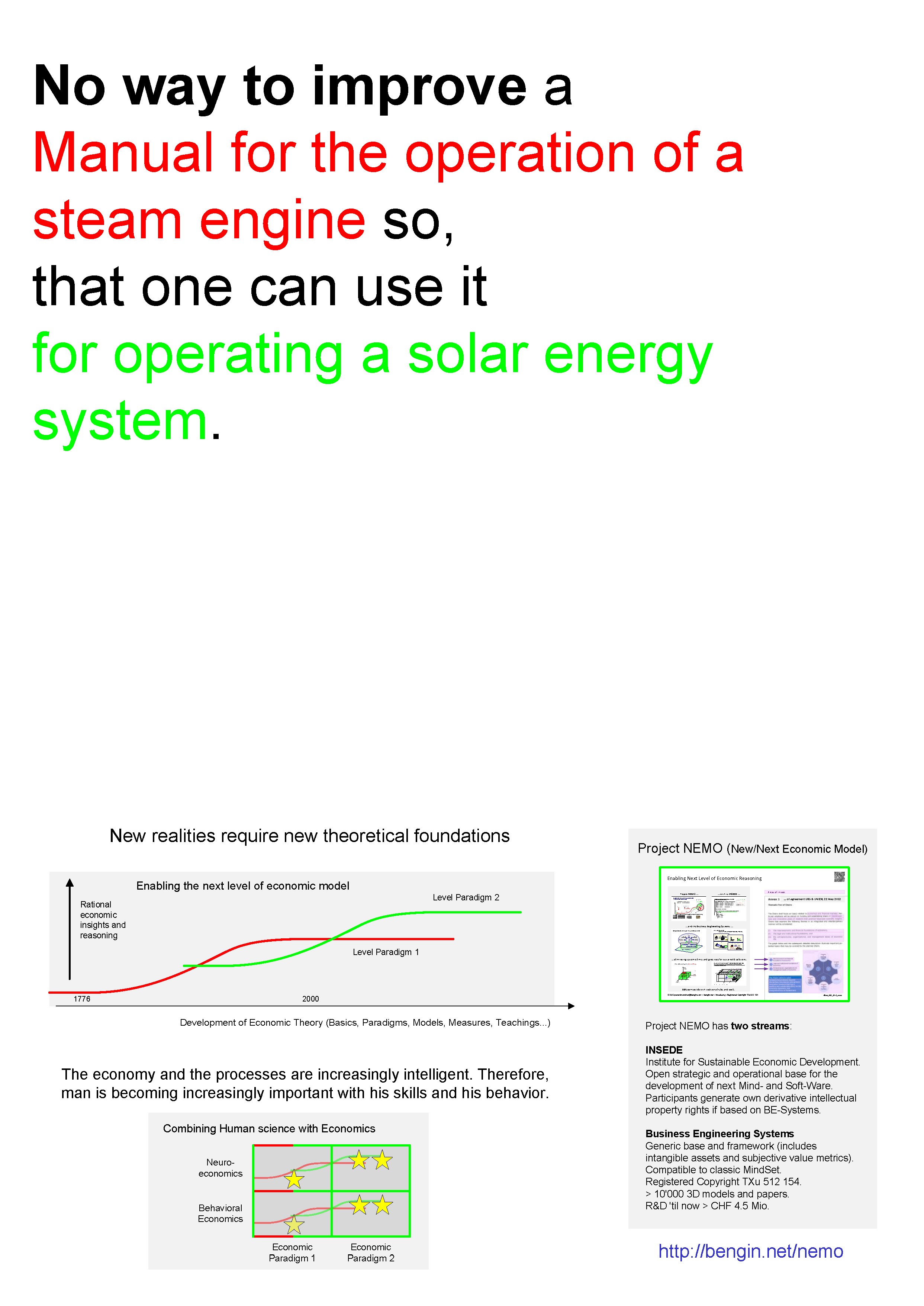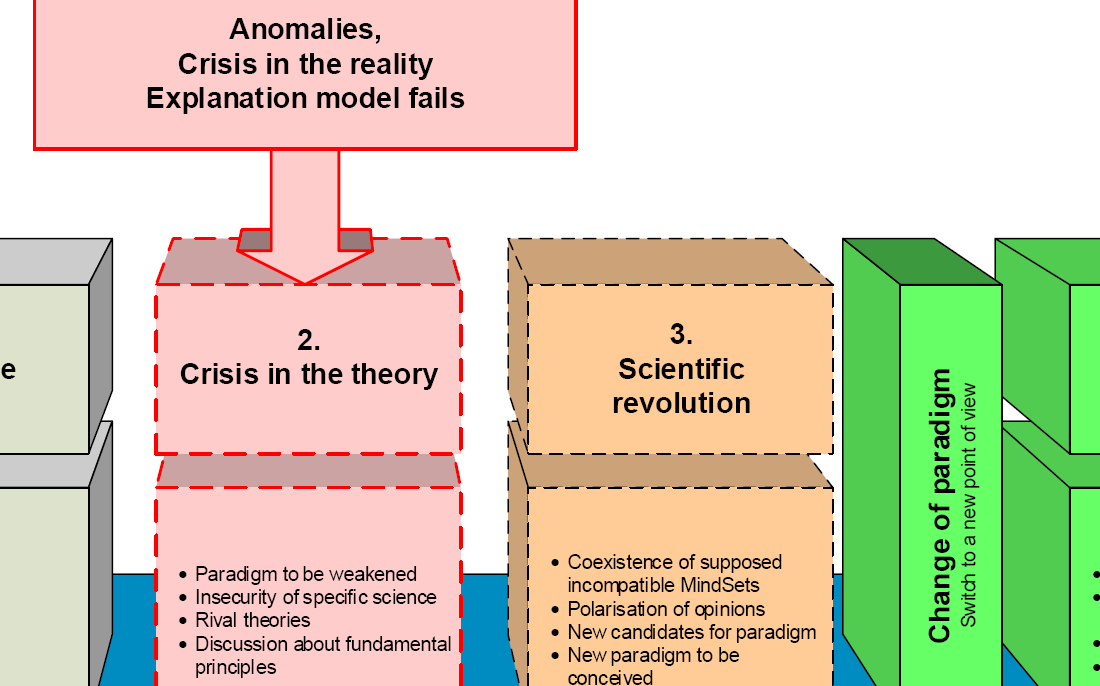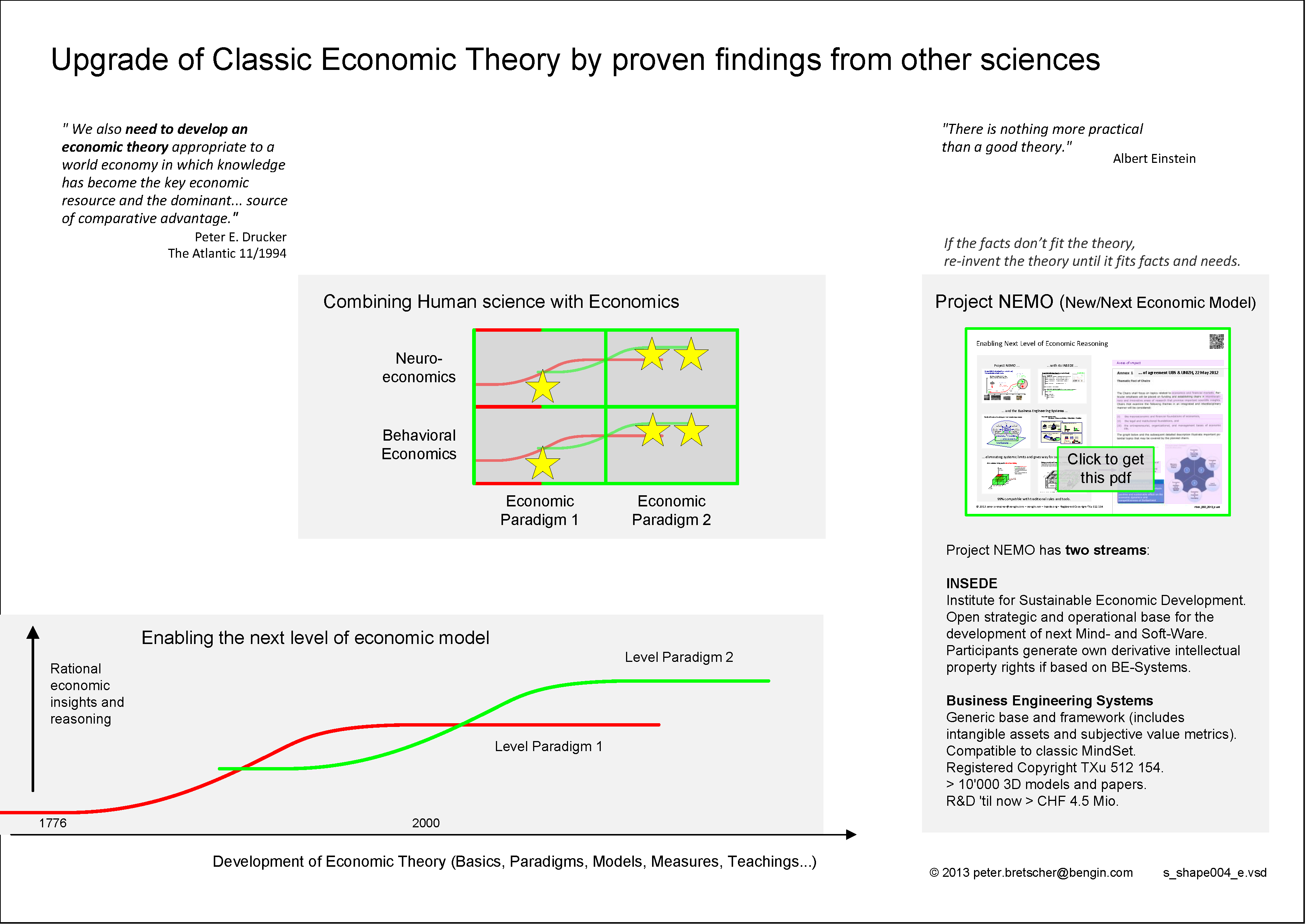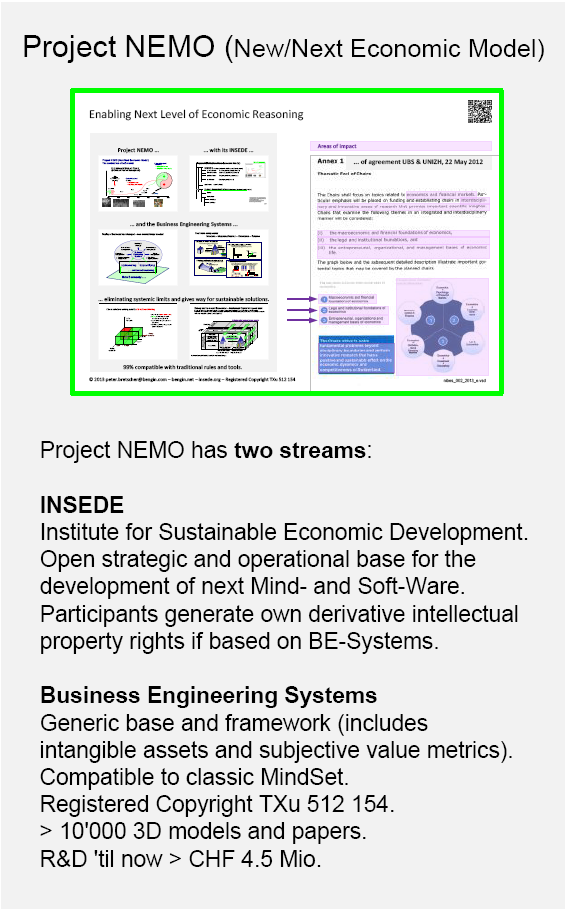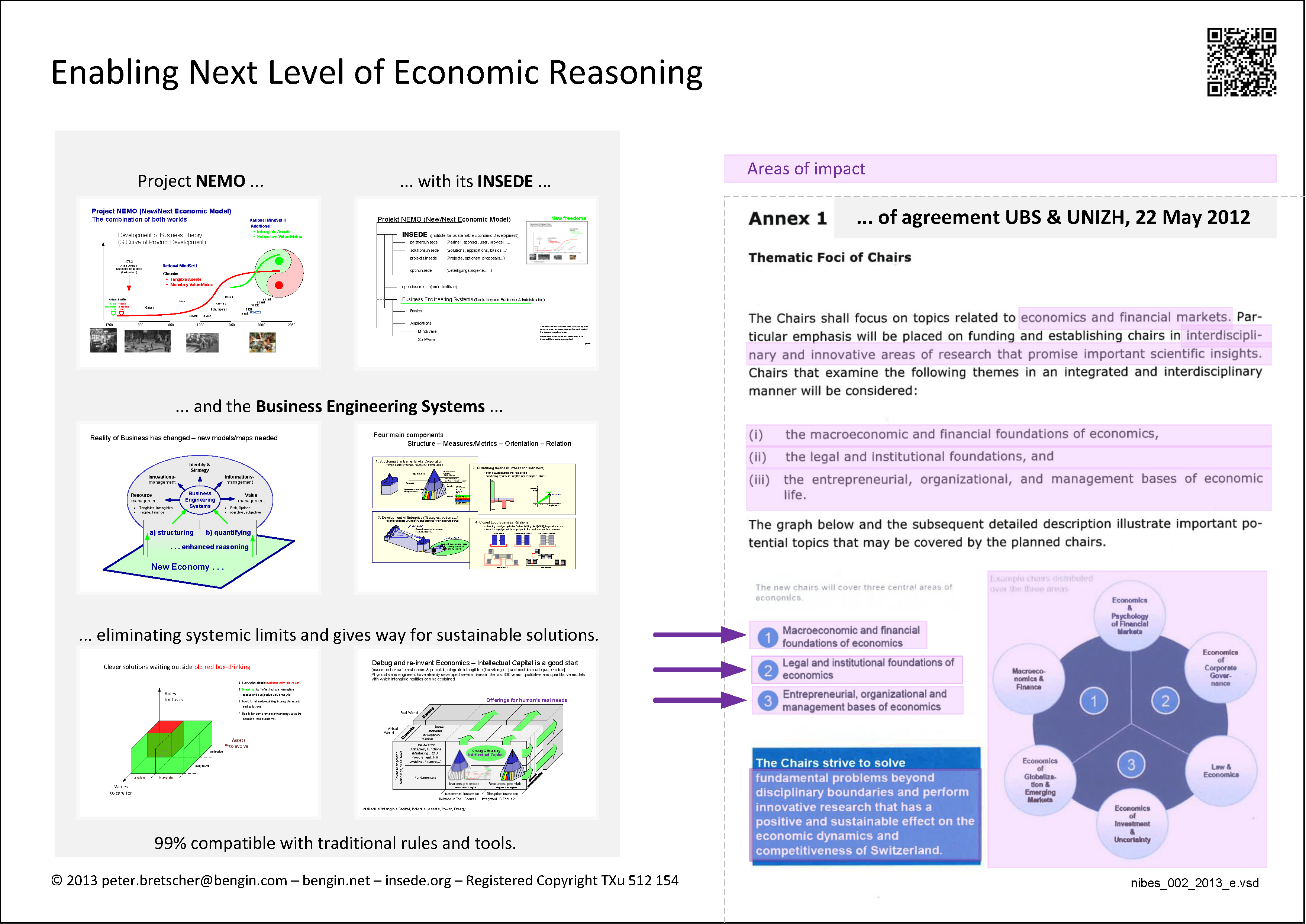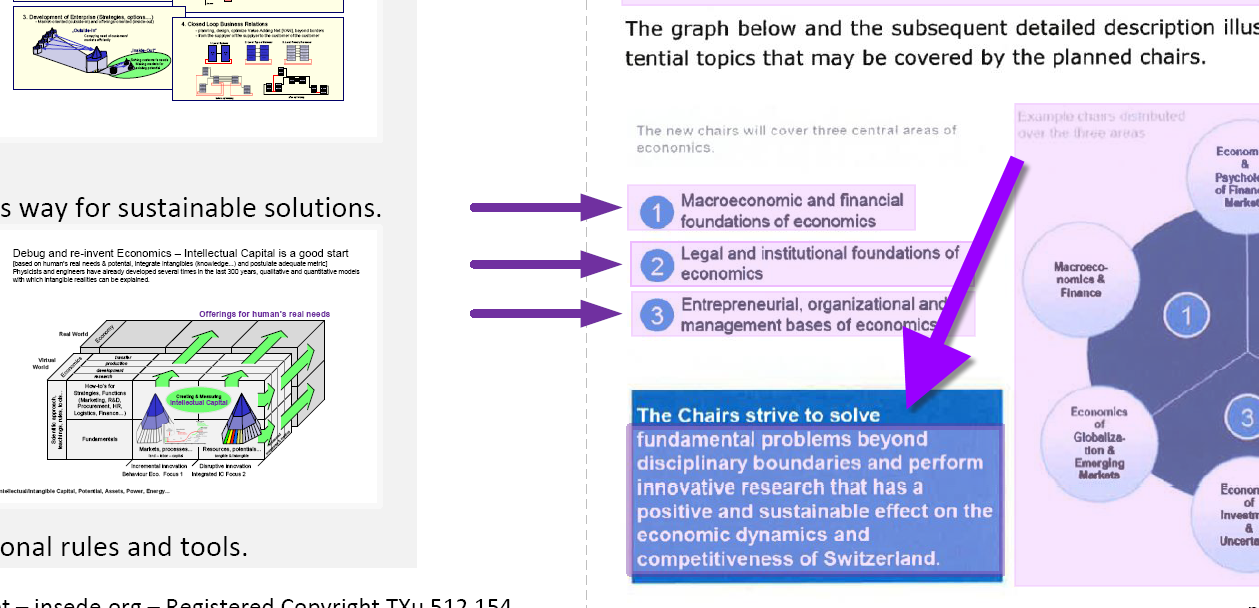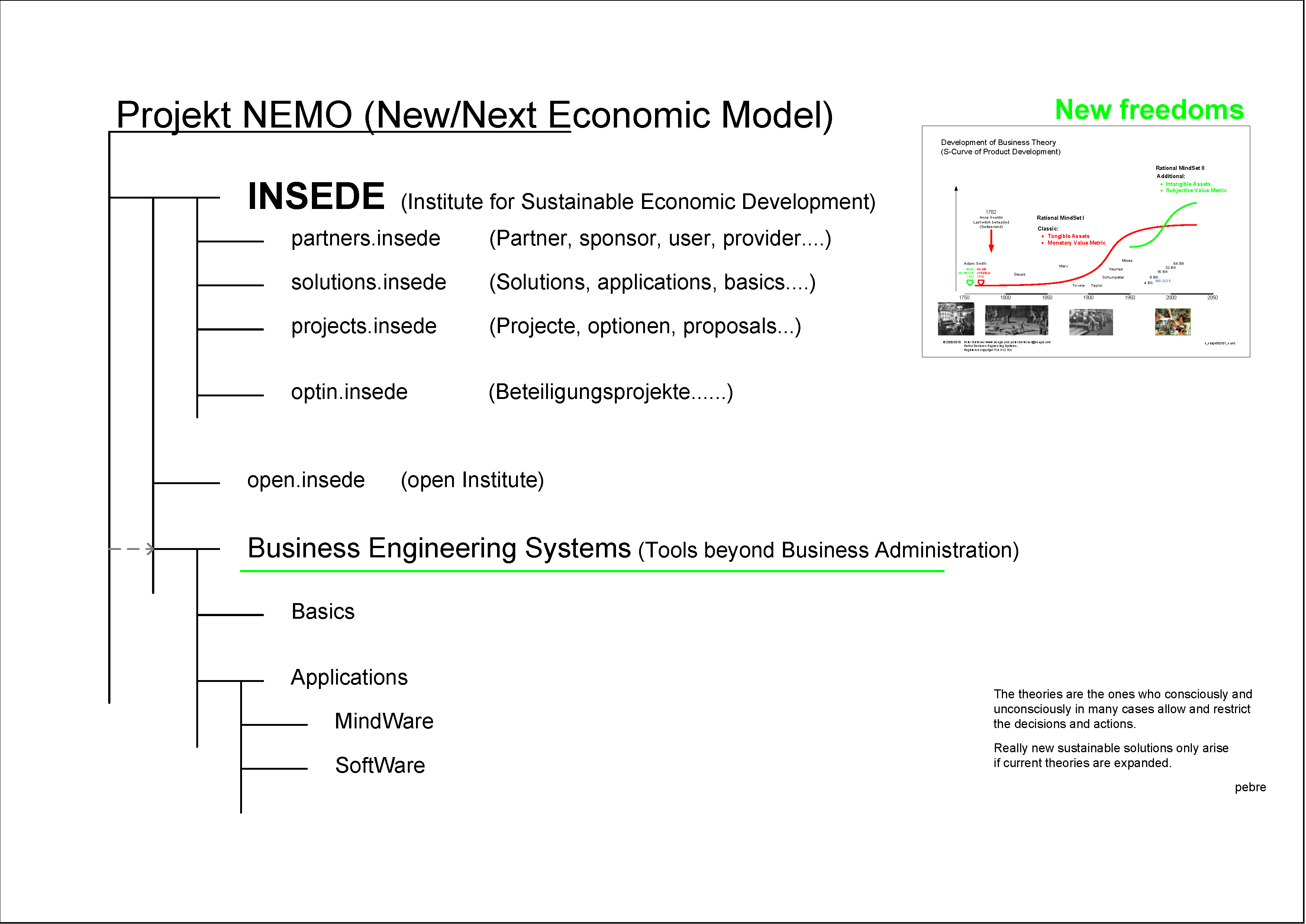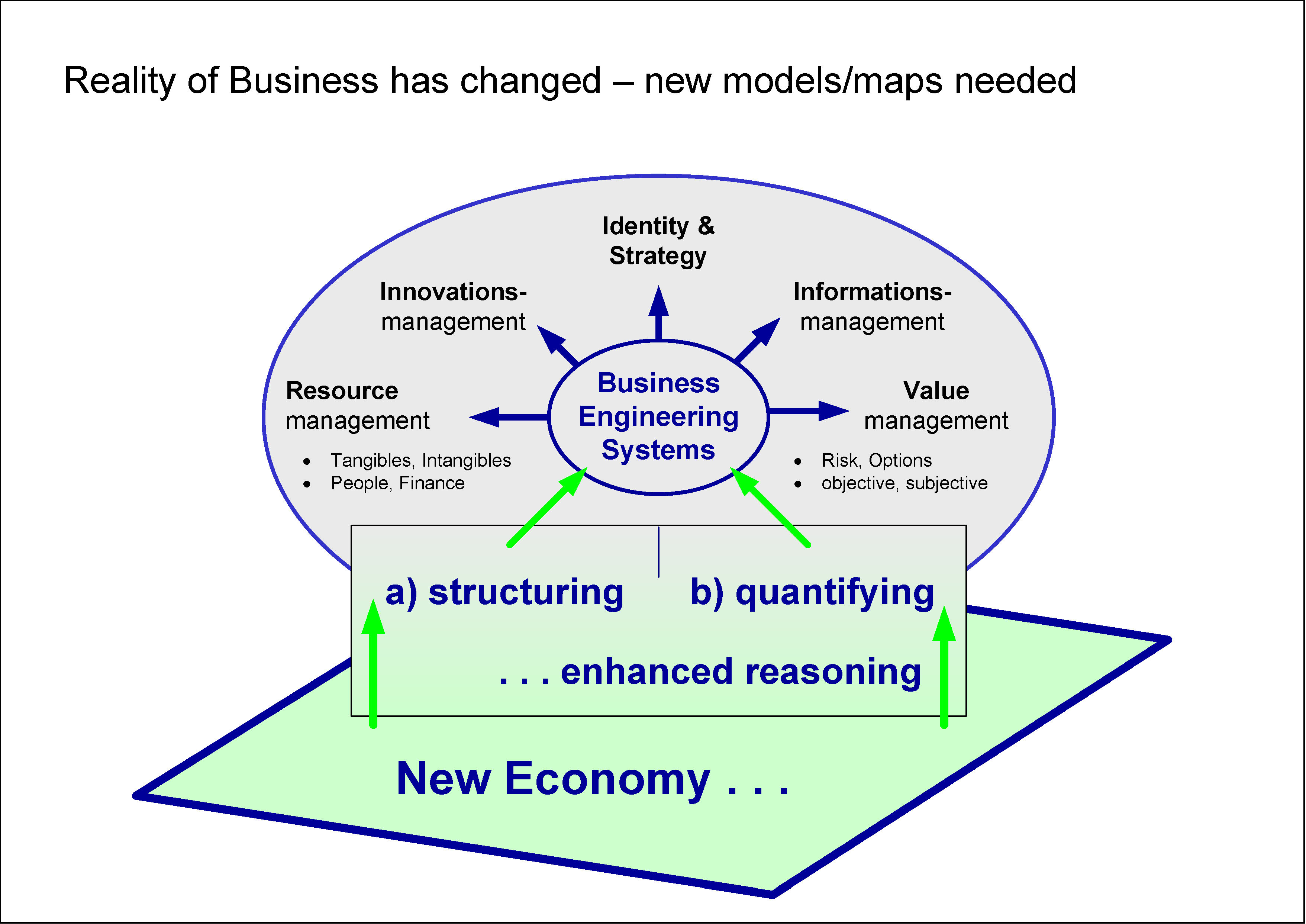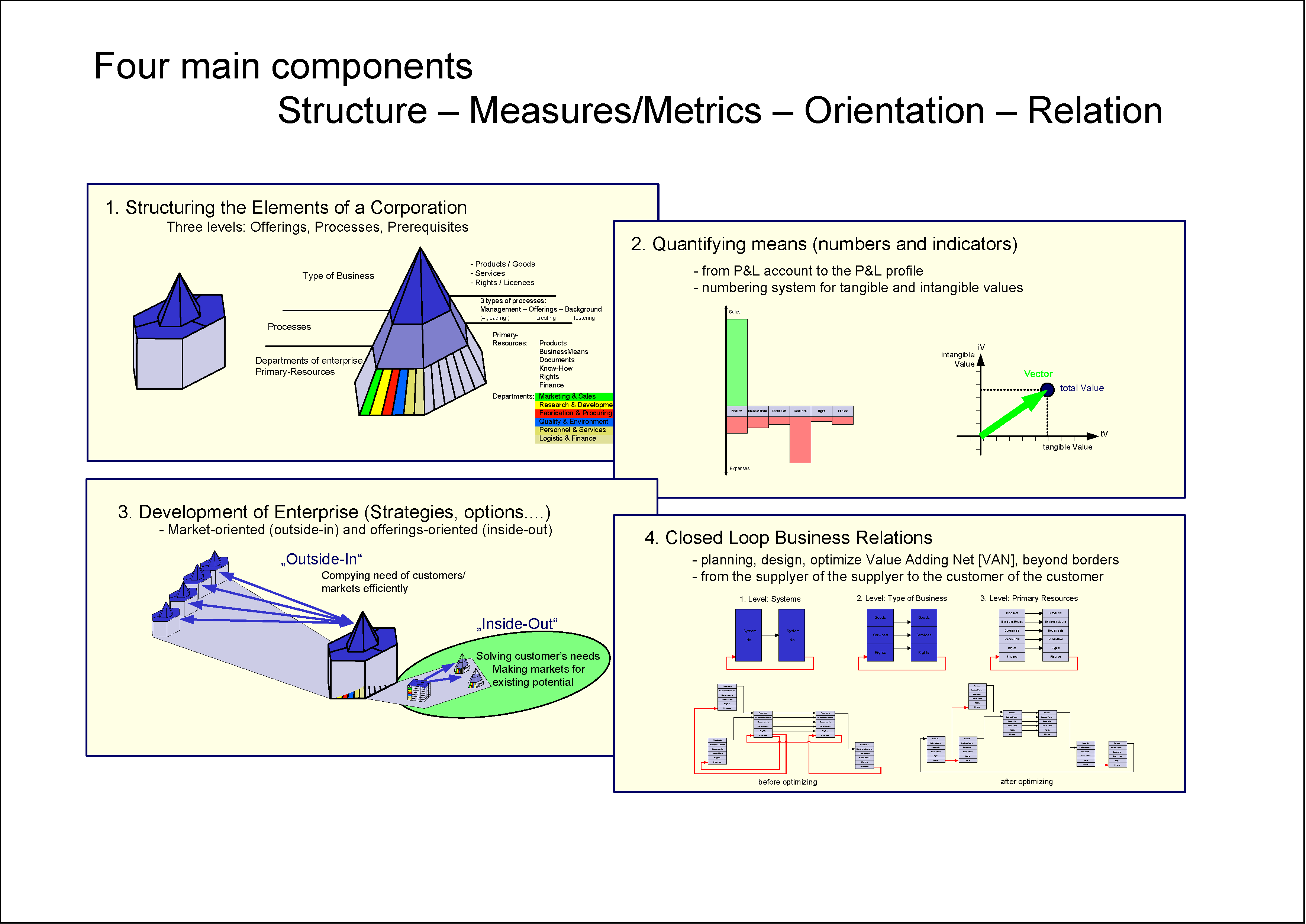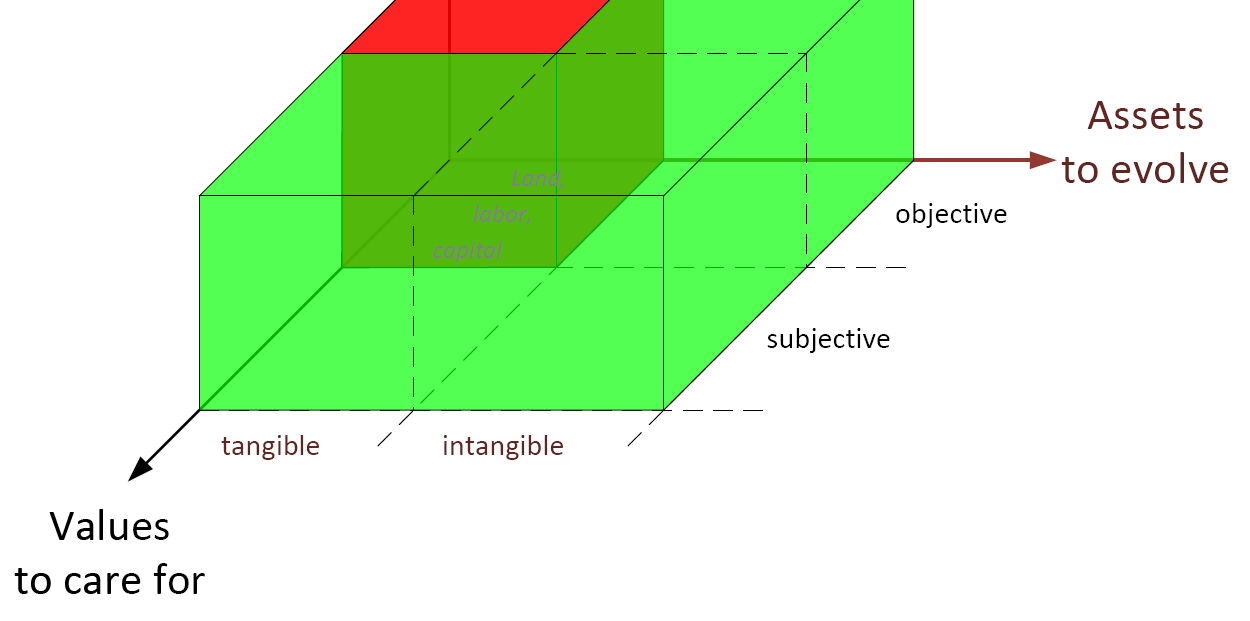About Project NEMO (New/Next Economic Model)
(Link goes to Project NEMO Homepage)
The foundations of classical economics were created for and in a time that was very different from that today.
If you want to make a theory for modern economy that takes into account current realities (tangible and intangible) and requirements, the foundations for such a model must be created first.
One can not develop a sustainable model for an intellectual driven world when the basis for this is not suitable because of leaving out intangibles.
"Debugging" and "updating" is getting more complicated and still not enough.
What is true for SoftWare, has its validity also for MindWare.
A new mental economic "operating system" for economists, managers and any decision maker is a key prerequisite for a better, more sustainable economic model.
Four stages of the Scientific Innovation
Thomas Kuhn has dealt extensively with the innovations in the scientific teachings.
The start of innovations in the sciences is actually getting when in reality are phenomena that can no longer explained with the classical teachings.
Then there's a time while old theory exponents are trying to manage and regulate the reality so that it fits back to the theory.
But because these mostly does not work, alternative theories arise. First, there's controversy among scientists, then the new views are also approved and later the old theories are discarded.
In many cases, the death of the representatives of the old doctrine gives way to more useful theories. That's why the cycle from an old to a new theory can take "easily" 25 years.
Innovation through new views
Sustainable innovations often happens at the interfaces between different areas of knowledge. For example, behavioral sciences and economics. "The whole thing is more than the sum of the parts."
Another source of sustainable innovations are problems in practice, when solutions have to be developed even there are no proven ways or scientific accepted theories. Here are fundamentally new approaches "on the green field" possible, supported on empirical knowledge and thus feasible and "near" to the real practice.
Alone the (quite difficult) combined insights from the humanities with models from classical economics already brings substantial progress.
The conjunction with an expansion of some of the economic base paradigms opens some additional dimensions for explaining real reality.
The fundamentals and applications used in the Project NEMO are based on solutions of tasks that resulted in a global company through diversification of the classic products orientation through the integration of services and licensing transactions.
These solutions are documented in the form of modules. They form the basis of the "Business Engineering Systems", whose copyright was registered in Washington.
These basic intellectual property rights are building the basis for INSEDE (Institute for Sustainable Economic Development) to establish development agreements with companies, universities, consultants and teachers - and to finance this development by licensing the developed solutions for professional use.
Where the new models work in scientific and real knowledge development
Due to their generic solutions they have "in principle" influence on disruptive innovations in all three areas - and the interfaces - of the three designated chairs.
"...strive to solve fundamental problems beyond disciplinary boundaries and perform innovative research that has positive and sustainable effect on the economic dynamics and competitiveness of Switzerland."
(from Framework Agreement between University of Zurich and UBS Foundation of Economics in Society, 2012, download pdf of agreement )
download entire pdf
The S-Shapes of innovations curves
The principle of S-curves for the development of products also applies to the "Product Business Administration" (Mindware, teachware). With new generic approaches the validity and scope of old solutions can be enlarged. This brings entrepreneurs, scientists, consultants, managers and teachers new freedom in decision making and implementation of new solutions which in the old paradigm were not possible.
download entire pdfProject NEMO has two sub-projects
Project NEMO realizes with (1) INSEDE the (open) "Development Tank", who further develops and disseminates new tools.
This may, but need not, be based on the (2) "Business Engineering Systems".
New Economy....
Since Adam Smith wrote his book, the fundamentals in the real economy, politics and society have changed significantly. It is important to take these new realities as a starting point and to develop a model in which the now important resources and values structured and can be quantified.
download entire pdfFour main priorities
Within the module spectrum of business engineering systems four main priorities have emerged.
1. Reality structuring/modeling (Basics)
2. New Metrics - also multidimensional (Basics)
3. Complementary strategies (Application)
4. Value creation in networked control loops (Application)
Because these insights and priorities have arisen in practice - and they have proved themselves (CHF 17 million in three years) - they are a good basis for sustainable development of enterprises.
download entire pdfEnlarged base - more possible solutions.
The starting position determines the "bigger picture" for further developments.
Conversely, if the paradigms are extended, which determine the starting position, new solutions are possible, greatly expanding the entire range of solutions. Simultaneously proven solutions can be used and are valid under the new conditions.
In software this is called a backward compatibility.
Here the base of the old theory (red) is extended in two dimensions.
a) Asset dimension: tangibles (old) plus intangibles (new)
b) Value Dimension: objective (old) plus subjective metrics (new)
Theoretical models for science and realistic tools for practitioners
Not only incremental innovations in the classic foundations and applications, but also disruptive innovations in the theories are necessary so that instruments can arise that can be sustainably effective in intelligent practice.
download entire pdf
